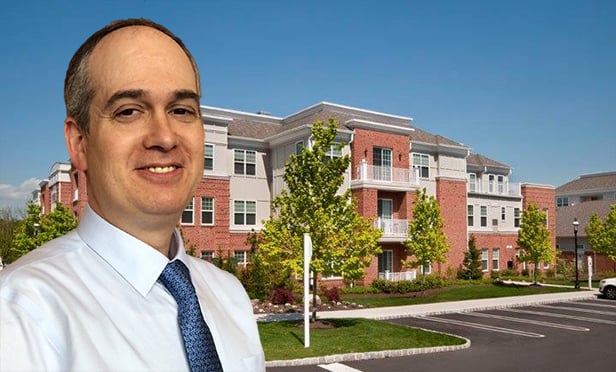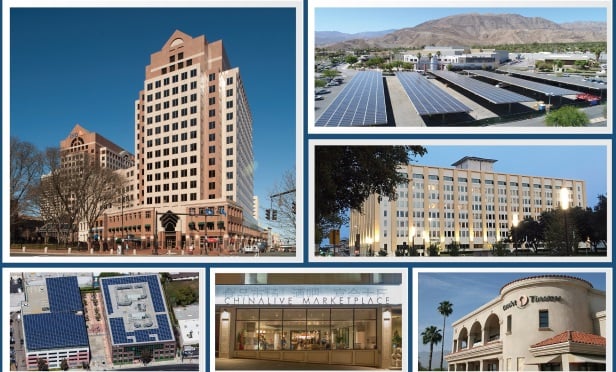NEW YORK CITY-Connectivity. Secure data. Energy usage tracking systems.
These are just some of the myriad issues—and capabilities—of technology being used in real estate and they were all discussed, along with some others, this week in Midtown during the event entitled, “Investigating the Impacts of Technology Innovations in CRE and NYC Infrastructure," a panel discussion put on by NAIOP NYC as part of its Tech Revolution series.
“The keyword is being connected,” asserted Charles Buscarino, president and founder, the Clarient Group. “Your highest cost is your staff and you want to keep them productive all the time. It starts with the carriers, so when you're looking at a building, you have to understand the carriers and what the building offers. You want multiple companies so there isn't a single point of failure. Also look for redundancy, such as two [telecommunication]closets, and they should be spacious. I may want roof access, in case of water main issues—you want multiple solutions that play together. And I expect to be able to connect to Wi-Fi and cell service, whether I'm in the top of the building or the basement.”
That connectivity expectation is a major issue for even the most technology forward firm, noted Phil Kirschner, America's head of workplace strategy at Credit Suisse. He discussed his firm's alternative working program, whereby “employees reserve spots in the company's offices, on a daily basis, to sit wherever they wish, and to change that location throughout the day, depending on whether they need quiet zones, for example, or collaborative space. We expect to soon have 8,000 participants out of 46,000 employees.”
However, he noted, employees are increasingly expected to use their own phones and devices—or it's demanded of them—and that comes with a price, of sorts. “If I'm saying you have to use your phone on the street, you have to have connectivity in our building, and our systems have to support everyone wanting to use them at the same time.”
But that raises other concerns, said Buscarino. “Security is a real issue with personal devices. The idea of work/home/play is a blur.” Added Kirschner, “Homeworking is a concern, you have to get comfortable with the security you can provide and trust the end user.”
The days of putting up physical walls or turnstiles and doors are a thing of the past, Kirschner said. “As technology gets more mobile and people become more fluid, we're pushing on the compliance department and saying 'really does there have to be doors? You could have half walls.' ”
Whatever you do, don't shut people out of social networks, warned Ari Goldberg, CEO and founder of StyleCaster Media Group. “You have to let the younger work force onto social media; otherwise those prospective employees won't work for you.”
Some firms are taking innovative approaches to security. “We've been exploring shooting fixed wireless service from 32 Sixth Ave. to our other buildings,” said Michael Rudin, VP, Rudin Management Co “It gives tenants secure networks off of our WiFi service.”
At Credit Suisse, efforts are afoot to find technology to measure energy consumption. “We're looking to increasingly leverage building systems, like using light sensors that tell us how people are using the space, not just those that turn on and off,” said Kirschner. “I think we'll see a pretty significant shift over the next few years of types of firms asking for this—it's not just technology companies.”
In fact, Rudin already is deploying such systems at two of its buildings. “We have hundreds of wireless sensors throughout the building—that building managers can see—which measure temperature, carbon dioxide, occupancy, we have weight sensors on elevators and more. It allows us to operate more efficiently, save money and reduce energy consumption.”
“When a turnstile makes revolutions,” he continued, “we count them and it allows our engineers to know when to ramp up or down. And with the elevator sensors we can track how many people get off on a floor, and we can pass energy consumption technology onto the tenants. We saved 30% of our energy load during a five-day heat wave in July, compared to what we'd usually run. By year end we'll be close to a $1 million saved in one building, so we can create big savings for a landlord.”
But the next revolution might come from the city, so the panel opined on Mayor-elect Bill de Blasio. “Hopefully he will be able to look back at what Mayor Michael Bloomberg has accomplished,” said Rudin. “There's a lot of stuff that should be carried over.”
Added Buscarino, “It's pennies on the dollar to introduce the infrastructure for these capabilities. So it would be good if you can encourage developers to at least start that.”
A self-professed Bloomberg aficionado, Goldberg asserted, “We need to add pressure and make sure DiBlasio keeps people on the team, particularly from the Economic Development Corp. I'm just going to go to synagogue and hope for the best.”
© Touchpoint Markets, All Rights Reserved. Request academic re-use from www.copyright.com. All other uses, submit a request to [email protected]. For more inforrmation visit Asset & Logo Licensing.







